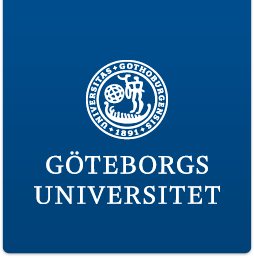The Aha Lab
Denna text finns bara på engelska
Tinkering is a particular approach to making characterized by a playful and experimental manner of engagement. Many materials support and encourage tinkering, but what if you want to create interactive projects that sense, react, and communicate? Under this circumstance, electronic and computational components can be used both as a tool and as a material to expand the scope and concept of tinkering.
Small, lightweight microcontrollers (a small computer on a circuit board) can be programmed to apply interaction to static artifacts. Through the integration of tinkering with computing technologies, children can gradually create new creative learning possibilities and develop computational thinking skills that enable them to design and build their projects.
Therefore, this project aims to explore the potential of electronic and computational components combined with tinkering as a creative medium and introducing tangible programming, the process of programming by manipulating physical objects, to children through an educational book called The Aha Lab.
The book is the result of twenty co-design sessions with children (9 – 13 years old), when observations, interviews, and mappings, produced a detailed and comprehensive description of their goals, challenges, and motivations that emerge while using digital technologies and electronic components.
The Aha Lab guides children through six experiments that apply science and programming principles to the design of six artifacts. They provide a blueprint for creative solutions that can be used in twelve other experiments, also listed in the book. They are divided into three levels of difficulty: beginner, intermediary, and advanced. In all of them, it’s proposed using the BBC Micro:bit, that allows the user to explore physical programming interactively.
Who is it for?
The Aha Lab is created for those eager to develop their design skills while tinkering with coding and electronics. Learners from around ten years can complete most of the experiments independently; however, in the case of adult assistance, the information is signalled.
The purpose of the book
The ultimate goal of e Aha lab is to provide children the opportunity to combine digital technology, electronic components, and physical programming while developing design skills. And also, to give parents and teachers the platform to explore coding, electronics, and design alongside their children and students.
Tangible programming
The experiments showcased in the book provide a proper introduction to tangible programming, which means coding by manipulating physical objects. Independently of the user’s familiarity with design or programming, they are able to learn through practical and stimulating experiments.
Electronic components
A wide range of electronic components is carefully chosen for each level. By doing so, the user has the opportunity to learn how to work with different components (microcontroller, LED, speaker, and more) and learn how to apply them in varied projects.
Making
The acrylic sets that accompany the book aim to encourage children to develop their making and construction skills further. By applying the principles of design thinking, the sets provide a variety of tools and materials that expand their skillset.
With the increase of distributed technology, one might be concerned with the ways that digital technology is entering children’s lives. It is undeniable that technology has created new challenges for children’s well-being, but these challenges create opportunities to present an alternative version where technology can strengthen their development.
The reflection on programming and digital technologies emerged from The Aha Lab can contribute to the enhancement of children’s learning. Through inquiring intensively into the past attempts to introduce programming in schools, how can digital technologies be introduced in activities that foster children’s creativity? How can we avoid teaching programming as an end into itself?
Through the agency of programming as a tool during the making process, both physical and digital children can behold the possibility of creating something tangible that can be shared with others. e educational system fosters a view of programming as mathematical accuracy and efficiency as signifiers of accomplishment. But to learn programming for the sake of programming can be limiting for some children unless they can put those skills to use in a meaningful way.
With the employment of digital technologies as a making-based activity, we can, through design, create opportunities for children to design. Such opportunities inherently involve solving-problem skills and understanding human behaviour in the context of creativity, allowing us to expand children’s perspectives and strengthen their creative confidence.
Programming has deep links with design and can provide insights into both analogue and digital worlds. Combining the awareness brought by the design process along with the emphasis on the development of children’s creative confidence, this project is the result of many discussions about children learning how to code as an end into itself.
Wanting to be part of the change that unleashes the power of tinkering combined with computational and electronic components for children, The Aha Lab empowers children to form their tools and contexts through an unplugged/plugged computer science experience, which can help children construct their understanding of both worlds.
Combining tinkering, tangible programming, and technology evidenced the interplay and ingenious aspect of manipulating something intangible as programming into a concrete sensorial experience. In this sense, The Aha Lab can create a bridge where technology and interaction perform a significant role in merging playfulness and children’s current involvement with computational thinking through tangible materials.











